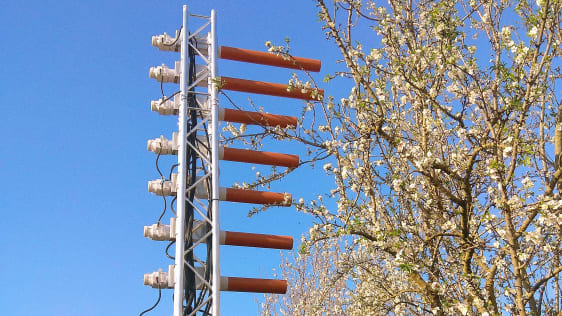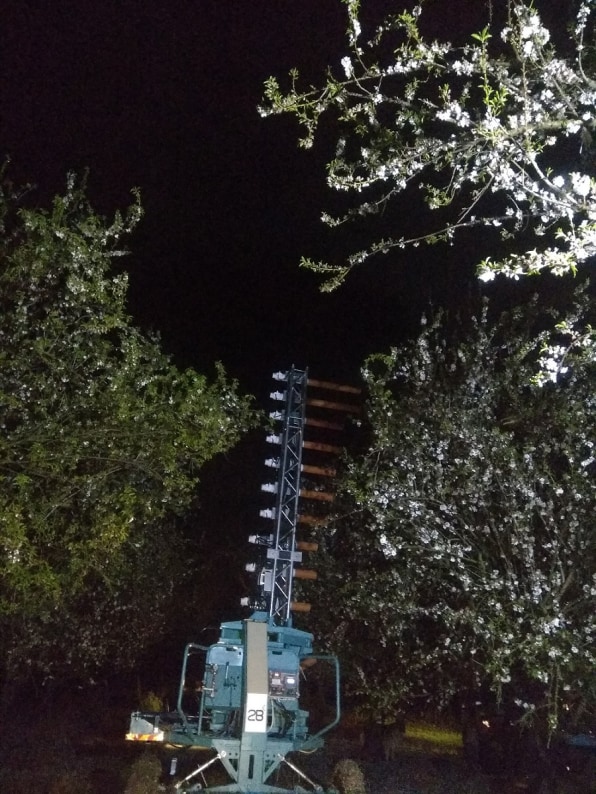In an almond orchard in Israel earlier this month, a machine topped with a column of tiny cannons stopped in front of a tree, beamed lasers at it to map out the shape of the branches, and then fired pollen at the almond blossoms. The technology is a glimpse at what agriculture could look like in a world without bees.
Honeybees pollinate dozens of crops, from cherries and blueberries to squash and cucumbers, but the almond industry is most reliant on them: Each year, farmers in California alone rent around 2 million hives to perform the essential task of pollinating almond blossoms so the fertilized flowers can become almonds. And as has been well-documented, the bees are struggling.


Eylam Ran, cofounder and CEO of Israeli startup Edete, which built the new artificial pollination robots, sees his role in part as helping bees. “When someone is growing and hundreds of acres of almonds in the same area, this is a complete disaster for bees,” he says. Bees also don’t do the job efficiently: To successfully pollinate an almond blossom, they need to travel between trees, but most of their movements are between blossoms on the same tree. They only work in certain temperatures. If the trees that need to be cross-pollinated aren’t blooming at the same time, the bees can’t work. Part of the problem is the scale of demand. Almond milk sales have grown 61% over the last five years. “Nature didn’t make the trees to take care of such a huge need,” Ran says.
Some might argue that means that we need to eat fewer almonds—or more radically, that the world can’t sustainably feed a human population that is quickly approaching 8 billion. Ran argues that we need different tools for food production. His startup’s process works by harvesting flowers from almond trees using the same tree-shaking machines that farmers now use to harvest almonds, then gently separating the pollen from the flower, and storing it for more than a year so that it can be used at the perfect time to match the bloom cycle of other trees. (All of this was challenging to develop, since unlike plants that pollinate with the wind, almond blossoms don’t easily give up pollen.) When trees are ready for pollination, the company’s equipment uses lidar-sensing technology to position itself next to each tree, and then sprays the pollen as close as possible to the branches. Ran compares it the end of an automatic car wash, when air blows over the contours of a car to dry it off. An electrostatic charge on the pollen helps it stick to the blossoms.
It can work without any bees at all, though Ran says that it works better with their help. “You just don’t have to have as many bees,” he says. Instead of using 2 million beehives in California in a season, the industry might use less than half, while accomplishing twice as much pollination. The cost of the service will be comparable to bee rental.
The startup is currently testing its technology in both Israel and Australia, and by 2022, plans to begin working at a large scale in California orchards. “We need to take whatever we’ve done in small areas in several acres, and to increase it to make sure that it’s working with several hundred and thousands of acres,” he says. “Jumping the scale is not trivial. We need to be careful that all the fundamentals that we’ve learned don’t change by changing the size of the machines and the production.” Assuming it works as expected, he plans to expand to other crops. The machine already works on other crops in the same family as almond trees, including apples and peaches. “There’s a lot of need for pollination,” he says.
